Care of the Abandoned Racing Pigeon Hatchling– Part 2 Feeding
Before you begin to handfeed the pigeon hatchling, you’ll need to create an artificial beak. You can do this by taking a syringe and cutting of the needle attachment at the end. The diameter of the opening should be large enough for the chick’s beak to fit inside with room enough for it to open its beak. You will have to adjust the syringe size as the bird develops.
Fill the syringe with formula. The hatchling will drink the formula when its beak is submerged into it. Natural parental regurgitation is mimicked by depressing the syringe plunger while the hatchling eats.
Hand Feeding Formulas
Initially, the formula must replicate pigeon milk, which is high in fat, protein and water. There are virtually no carbohydrates in natural pigeon milk.
As the hatchling grows, the formula will need to be adjusted and progressively become similar to the adult pigeon diet. During this progression, the level of carbohydrates and solid matter increases while the protein and fat content decreases.
Commercially produced diets are readily available. A popular brand is called “Roudybush™”. This brand was developed by Dr. Roudybush, an American vet who established and operates The Roudybush™ bird food manufacturing company.
Formulas available through this company that you may want to consider using are the Roudybush Squab Diet and Roudybush Formula 3.
The nutritional requirements of a growing pigeon squab can be categorized into four stages. These four stages and the corresponding recommended feeds are:
Stage 1: Hatching to 4 days
- Feed Roudybush Squab Handfeeding Formula™
- Diluted 2.2 parts water : 1 part formula by volume
- Feed five to six times daily
Note: Some newly hatched chicks can survive off the resorbing yolk sac for 24 hours. There are some people who prefer to initially feed either saline or Hartmann’s solution, especially if the chick appears dehydrated. Symptoms of dehydration include a deep red color and poor responsiveness. This is more likely to occur in prolonged hatching. You can obtain the saline and the Hartmann’s from a vet or pharmacist.
Stage 2: Early growth, 5 – 7 days
- Roudybush Squab Handfeeding Formula™
- Diluted 1.5 parts water : 1 part formula by volume
- Feed four to five times daily
Stage 3: Late growth, 8 – 14 days
- Roudybush Squab Handfeeding Formula™
- Dilute 1 part water : 1 part formula by volume
- Feed three times daily
Stage 4: Fledgling, 15 days – weaning (28 – 30 days)
- Roudybush Formula 3™
- Initially dilute at the rate of 1.2 parts water : 1 part formula by volume
- Reduce the amount of water as the chick ages
- Feed from 3 times daily down to once daily and start to provide normal adult seed mix
Throughout all the stages, adding a probiotic, such as Probac, to the dilution water for at least one feed per day is highly recommended.
And so, is it all worthwhile? From personal experience, it’s a lot of work and the youngsters at weaning do tend to be slightly weaker than those that are parent-reared. But, once weaned and eating independently, they do quickly compensate and catch up and can certainly perform competitively as racers.
In summary, care and hand-rearing the abandoned racing pigeon egg or hatchling is probably best undertaken for those special youngsters. It really all depends on the value you, the fancier, placed on that particular hatchling. But, it’s reassuring to know that you do have the option of incubating and hand-raising and you can succeed at it.

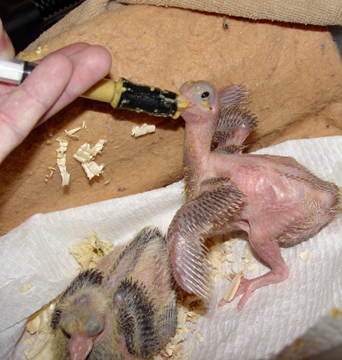
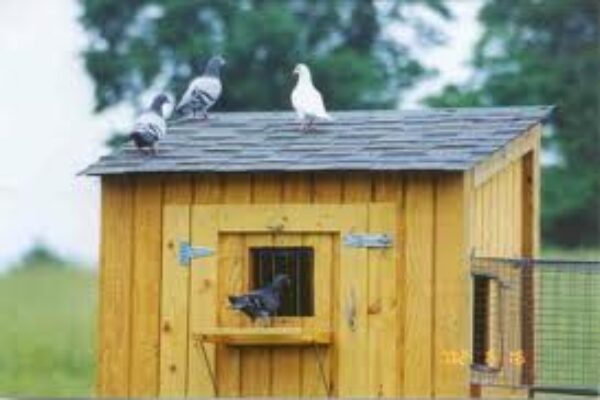
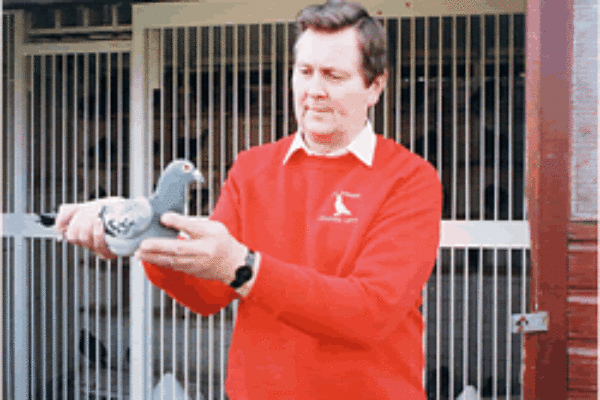
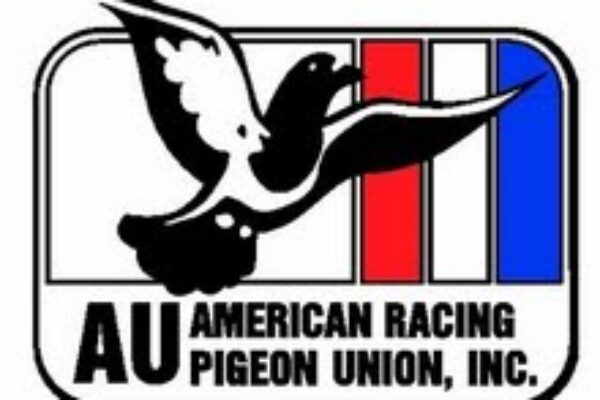
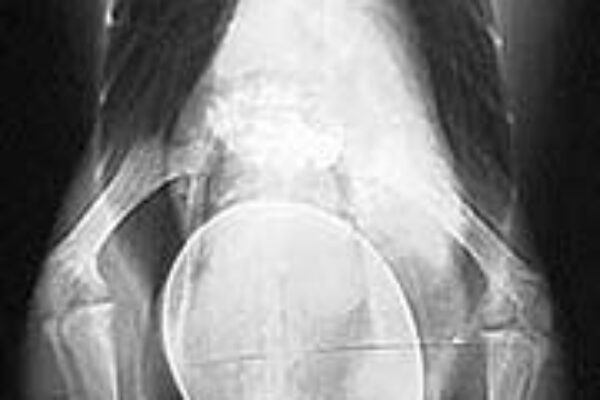
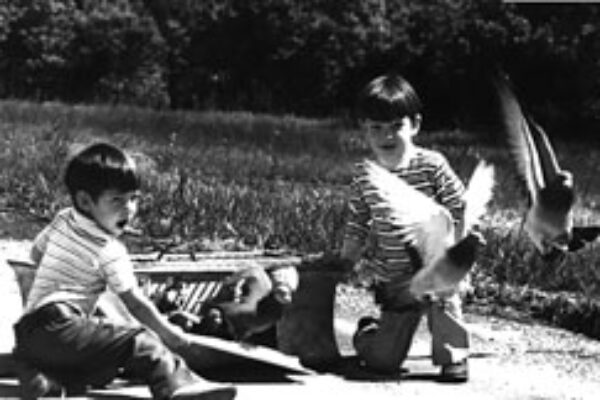
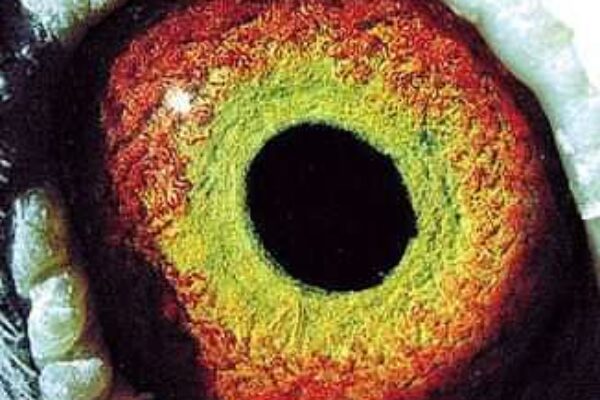


Very interesting informations.
Hi
Thanks again for a enlightening article,I fed my young squabs with future life formula,works Every Time,mix a little maizemeal when they older to bulk it up and before long they up and away
The easiest and best route for squabs over 5 days old is to use Purina Nutrablend pigeon feed(little round pellets) as the sole feed. Just grind it with a coffee grinder then soak it in hot water for 10 minutes or so until it is like thin oatmeal then use a syringe with a bit of 7 french surgical tubing to squirt it down the esophagus to the crop. Using something that the squab inserts it’s beak into is asking for bacteria and fungus problems . Once the birds and you get used to this you will find that the babies open their mouths for the tube when you let them probe between your fingers. Takes a bit but once you get the process worked out it is a breeze. And 2 feedings a day are plenty if you fill the crops. Be sure that each baby is completely empty once each day to avoid yeast problems.
I use the purina nutrablend for almost all my bird babies from doves to macaws and even lories and it is a lifesaver and cheap compared to the commercial baby formulas and more balanced nutrition than any homemade combinations I have ever tried. You still need the Roudybush formula for newly hatched squabs though.
I have successfully hand fed whole maple pea’s to squabs at the age of those in the picture.Once the feathers start to break through you can feed maples,as they have no sharp edges and the young pigeon can swallow them easily.Start off with half a dozen,then as the squab gets the hang of it,you can increase the amount each day.And you can use a droper, syringe, or similar to feed water and probiotics.No need for fancy formulas.
Nutritional formulas prevent nutritional deficiencies. You can never feed only one ingredient to a living animal (young or old) unless they are evolutionarily designed for it. As the article says, pigeons need many different vitamins, amino acids, minerals etc (list available on products like aviform ultimate). Also, dried food is too rough on their delicate throats (can be too abrasive even for adults when they are dehydrated) which can encourage infection or diesease (e.g canker) through micro-cuts. Also, you cannot syringe water to a bird as it risks aspirated pneumonia if it goes down the airway into the lungs. This can be fatal. I write for the sake of the birds, to prevent others following your advice. Easiest is not always best.
Hi Cris,
Nice article, it might help us here in the Philippines if we have those formula feeds.
hey. Can someone help, I found a pigeon from Finland. its feet on the tire, PL 012 6121. it is ringed 2010. ring is Polish. How is a pigeon in Finland in the middle of winter?
nice article but u know in pakistan we dont have such ready made formulas
I fed my Squabs from my mouth,,,Hello